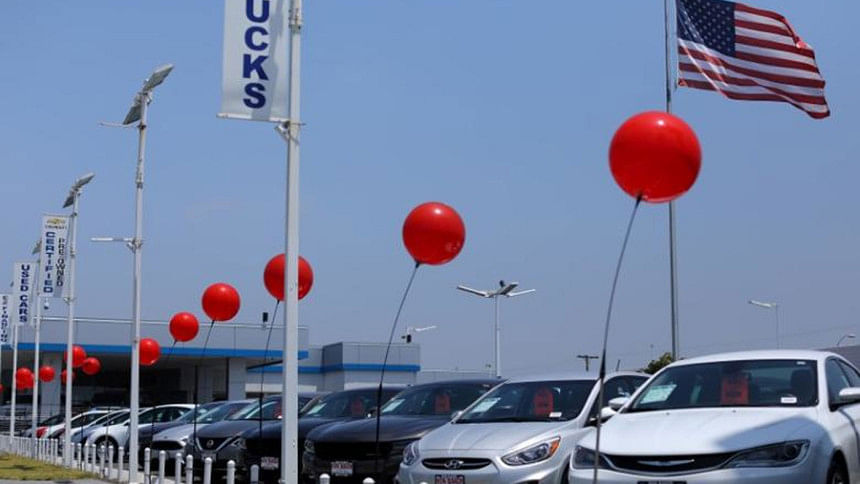Used cars drive US consumer prices higher; inflation pressures firming

US consumer prices rose solidly in August, with the cost of used cars and trucks accelerating by the most in more than 51 years likely as Americans shunned public transportation because of fears of contracting COVID-19.
The report from the Labor Department on Friday also showed a firming in underlying inflation last month, putting fears of deflation to rest. Deflation, a decline in the general price level, is harmful during a recession as consumers and businesses may delay purchases in anticipation of lower prices. Still, stirring inflation is unlikely to discourage the Federal Reserve from pumping more money into the economy to aid the recovery from the COVID-19 recession amid considerable labor market slack. The US central bank in August rewrote its framework, putting new emphasis on the labor market and less on worries about too-high inflation.
"Consumer prices are rebounding from the pandemic shock, but as supply shortages are resolved, upward price increases should moderate," said Kathy Bostjancic, chief US financial economist at Oxford Economics in New York. "The Fed's new policy objectives underscore that monetary policy will remain very accommodative for a considerable time." The consumer price index increased 0.4 per cent last month, also lifted by gains in the costs of gasoline, recreation and household furnishings and operations. The CPI advanced 0.6 per cent in both June and July after falling in the prior three months as business closures to slow the spread of the coronavirus depressed demand.
In the 12 months through August, the CPI increased 1.3 per cent after gaining 1.0 per cent in the 12 months through July.
Economists polled by Reuters had forecast the CPI would rise 0.3 per cent in August and climb 1.2 per cent on a year-on-year basis. Excluding the volatile food and energy components, the CPI gained 0.4 per cent last month after surging 0.6 per cent in July, the largest gain since January 1991. A 5.4 per cent jump in prices of used cars and trucks, the largest gain since March 1969, accounted for more than 40 per cent of the rise in the so-called core CPI last month.
In the 12 months through August, the core CPI climbed 1.7 per cent after rising 1.6 per cent in July. Though the Fed's embrace of what it calls "flexible average inflation targeting" is still shy of many details, in theory it could see policymakers tolerate price increases above its 2 per cent target for a period of perhaps several years to offset years in which inflation was lodged below its goal.
Policymakers have expressed a range of ideas about how this might work in practice, but agree the aim is to let prices rise fast enough that household and businesses take their inflation target seriously. The Fed's preferred inflation measure, the core personal consumption expenditures (PCE) price index rose 1.3 per cent in the 12 months through July. August's core PCE price index data is scheduled to be released at the end of this month.
Some economists questioned the need for higher inflation as many households were struggling because of the pandemic.
"For the individual worker, rising inflation is not good news, no matter what the Fed thinks," said Joel Naroff, chief economist at Naroff Economics in Holland, Pennsylvania. Stocks on Wall Street were trading higher after pulling back in the previous session. The dollar was slightly lower against a basket of currencies. Prices of US Treasuries rose. Though food prices rocketed at the height of the COVID-19 business shutdowns, inflation stayed muted as the pandemic undercut demand for services like healthcare, air travel, dining out and hotel accommodation. High unemployment is also keeping a lid on price pressures despite the Fed's extraordinarily easy monetary policy and record fiscal stimulus from the government. Nearly 30 million people are on unemployment benefits.
Last month, gasoline prices rose 2.0 per cent after increasing 5.6 per cent in July. Food prices edged up 0.1 per cent after declining 0.4 per cent in July, the first decrease since April 2019. The cost of food consumed at home fell 0.1 per cent after dropping 1.1 per cent in the prior month.

 For all latest news, follow The Daily Star's Google News channel.
For all latest news, follow The Daily Star's Google News channel. 



Comments